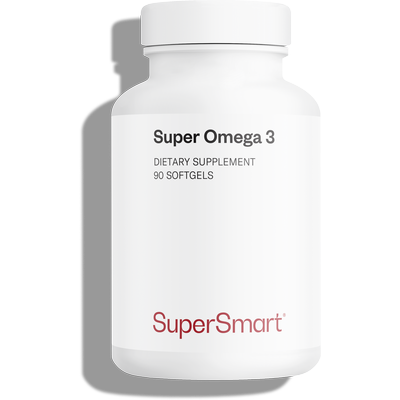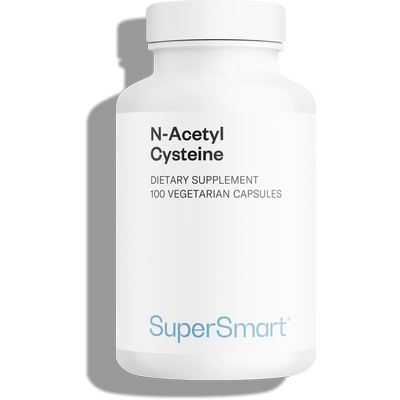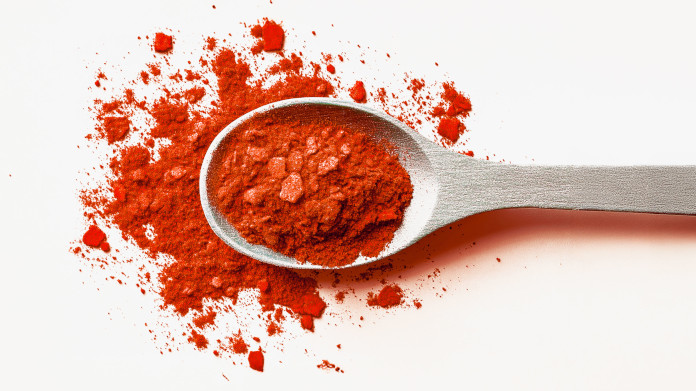In stock
Hair&Nail Formula + Daily3
Complete your selection
What is in Hair&Nail Formula + Daily3
Any questions?
Our team of nutrition experts and scientists has the answers.
Daily 3® composition is regularly updated in order to push back the boundaries of excellence even further and incorporate the latest scientific advances.
What’s been added
For the first time, we have added nicotinamide riboside.
The addition of nicotinamide riboside to Daily 3® (10mg per daily dose) is a major development given this compound’s reputation within the scientific community. It’s a highly promising anti-ageing substance which is only just starting to be available to the public. Once ingested, it crosses the intestinal barrier with ease, where it is converted into an essential coenzyme called NAD (nicotinamide adenine dinucleotide), production of which declines with age. It’s clear that NAD helps fight against ageing by increasing the level of sirtuins, the ‘longevity proteins’ involved in many physiological mechanisms.
The amount of BioPQQ® has been doubled and that of lycopene increased (from 2 to 5 mg).
Studies show that PQQ stimulates the growth of new mitochondria, the organelles responsible for cellular energy production, as well as that of nerve growth factor (NGF) (5-6). One clinical study demonstrated that 8 weeks’ supplementation with PQQ led to improvements in mood, fatigue, and sleep quality (7). In this new version of Daily 3®, Supersmart has increased PQQ levels to 10mg in line with the dose used in most of these studies.
The amount of magnesium has been doubled.
A recent study showed that one in two of us has inadequate magnesium levels (8). This is a growing trend due to rapid changes in dietary habits, greater stress levels (9), increasingly common disruption of the acid-base balance, and the rising incidence of diseases like diabetes (10) and metabolic syndrome. And the consequences of such inadequacy are far from trivial: nerve and muscle hyperexcitability, cramps, tingling, hypersensitivity to stress, insomnia, increased heart rate, more frequent migraines, emotional over-sensitivity, fatigue, muscle pain...
In light of this, Supersmart has doubled the amount of magnesium, taking the total daily dose to 80 mg.
What’s been improved
Resveratrol has been replaced by pterostilbene.
Daily 3® now features pterostilbene, a nutrient from the same family as resveratrol but with much better bioavailability (80% for pterostilbene as against 20% for resveratrol).
It now contains a better form of vitamin B6.
Scientists have recently demonstrated that the active form of vitamin B6 in the body is pyridoxal-5-phosphate. Pyridoxine has therefore been replaced by this more bioavailable form.
The amount of vitamin K1 has been reduced (from 140 µg to 100 µg) but vitamin K2 has been added (75 µg).
There are two main forms of vitamin K: phytomenadione (K1) and menaquinone (K2).The most recent studies suggest that vitamin K1 acts more directly on coagulation, while K2 works on the calcification of soft tissue. It therefore makes sense to offer both forms in our formulation.
What’s been reduced or removed
The amount of vitamin A is now lower.
As recent studies have shown that the risk of vitamin A deficiency in developed countries is now low, Supersmart has reduced the amount of this vitamin in order to make room for other beneficial nutrients. It’s important to stress that the previous version never presented any risk of ‘over-dosing’, as beta-carotene is only converted into vitamin A when the body needs it.
Total tocopherols and gamma tocopherols have been removed.
Some meta-analyses have questioned the wisdom of regular supplementation with vitamin E at doses above 400IU a day (11). For those with very low starting levels of oxidative stress, it could actually present a slight health risk. While such conclusions remain the subject of debate, Supersmart has chosen to remove the synthetic tocopherols from Daily 3® and to retain only the natural vitamin E and tocotrienols, which according to the scientific literature, are more active (12).
Molybdene, selenium and zinc have all been reduced.
We’ve chosen to reduce the amount of these three trace elements and bring them in line with recommended daily amounts since the latest studies have shown no benefit in exceeding these levels. We have, of course, retained the same exceptional forms which offer optimal bioavailability: molybdene citrate, selenomethionine (obtained naturally) and zinc gluconate.
You may occasionally notice darker spots or slight color variations in our Hair and Nails Formula capsules. This is completely normal and does not affect the safety, quality or effectiveness of the product. These spots can occur due to natural humidity exposure, especially in environments with fluctuating temperatures.
We want to assure you that every batch undergoes rigorous microbiological and quality control testing, ensuring it meets the highest standards for safety and performance.
Take three capsules a day, one with each of your three main meals: it’s never been easier to maintain good health.
This product’s capsules are composed of HPMC (hydroxypropyl methylcellulose), a plant substance derived from cellulose. HPMC is widely used for medicines and dietary supplements. It contains no animal ingredients, is recognised as safe by health authorities and is considered more sustainable than synthetic alternatives.
Surprising though it may seem, our hair and nails have much in common. Both are considered to be dander – specific biological tissue characterised by high levels of keratin. This is a fibrous protein which exists in various forms including alpha keratin, the most abundant form in the human body. It consists of numerous sulphur-containing amino acids such as cysteine. Making up 95% of the hair’s composition, keratin has both a structural and protective role. For example, it helps protect the body from many external attacks including UV radiation. In addition to these essential functions, keratin may also be associated with well-being. The structural changes of this protein may affect the aesthetic aspect of the hair and nails. A breakdown in the quality of keratin may be either caused by certain diseases or associated with cellular ageing. This is why keratin-based dietary supplements have been formulated to help care for both the hair and nails. Such supplements include the new Hair & Nails Formula which has the particular feature of including a new form of keratin - Cynatine HNS®, a solubilised form for optimal bioavailability.
- To extend your life expectancy. As you’re no doubt aware, healthy life expectancy or ‘healthspan’, has stopped rising in Western countries. Many physiological mechanisms become less efficient with age, such as absorption of nutrients through the digestive wall, production of endogenous antioxidants, and efficacy of the immune system, neurotransmission, and circulation. Relatively quickly, this degeneration leads to the development of age-related diseases and makes the body more fragile. The composition of Daily 3® has been developed to combat the decline in these functions and compensate for their loss of efficacy.
- To allow your body to realise its full potential and help you feel great. Even if you eat a balanced, organic diet, you’ll almost certainly still be lacking in several micronutrients. The nutrient and mineral content of our food has been in constant decline since the last century and our fruit and vegetable intake is generally far from ideal (13). Researchers have estimated the loss in calcium, iron, vitamin B12 and vitamin C to be in the region of 30% in 50 years. This is due to misuse of pesticides, soil depletion, the preference for more resistant, but less nutritious, varieties, eating foods that spend days in transit before being stored, and modern lifestyles. Daily 3® allows you to compensate for these losses: within just a few days, you’ll notice you have significantly renewed energy.
- To combat the relentless attack on your body from the pollution, harmful substances and stress that cause disease. In the West, we’re facing an epidemic of ‘new’ disorders and health problems, such as diabetes and obesity, as well as auto-immune and neurodegenerative diseases. These are all linked, either directly or indirectly, to our unhealthy new dietary model, increasingly sedentary lifestyles and raised stress levels, all of which increase our requirements for many nutrients, particularly antioxidant compounds and vitamins. With its high content of exceptional antioxidants and vitamins in optimal forms, Daily 3® helps the body combat these attacks and reduces the risk of disease.
This product’s capsules are composed of HPMC (hydroxypropyl methylcellulose), a plant substance derived from cellulose. HPMC is widely used for medicines and dietary supplements. It contains no animal ingredients, is recognised as safe by health authorities and is considered more sustainable than synthetic alternatives.







